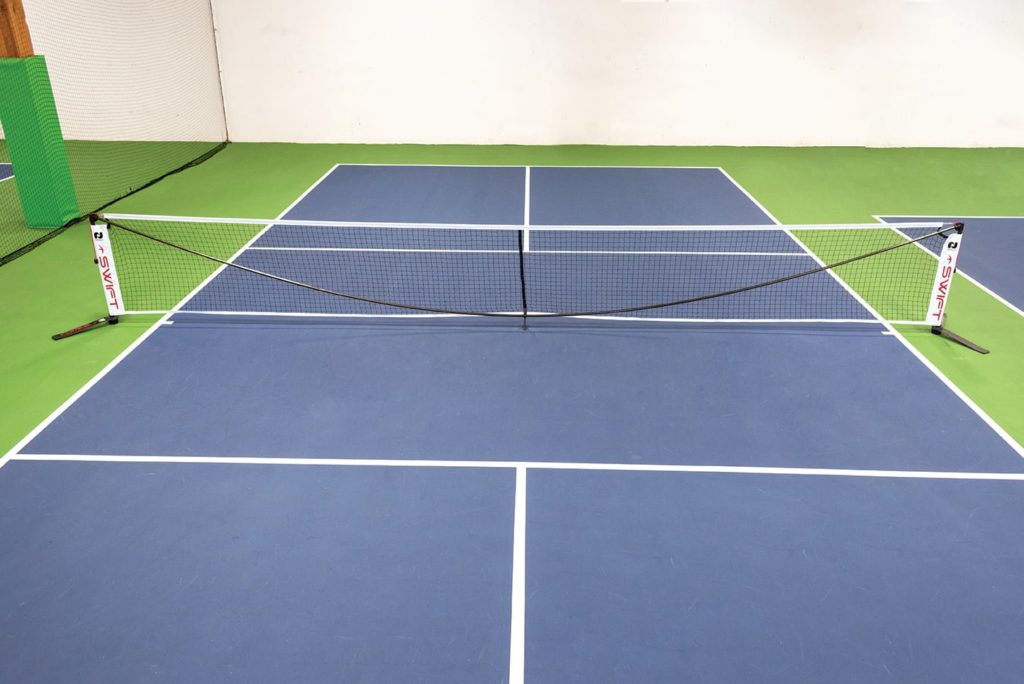Expert Pickleball Court Construction-- From Design to Setup
Expert Pickleball Court Construction-- From Design to Setup
Blog Article
Lasting Practices in Pickleball Court Building And Construction You Should Know
As the popularity of pickleball proceeds to climb, so also does the requirement for sustainable practices in court construction. This strategy not just addresses environmental worries yet additionally improves the long life and functionality of the courts. From choosing environment-friendly materials to executing efficient water drainage and energy-saving lights remedies, there are many methods to consider. Yet, the effect of these techniques prolongs far past the court itself. Comprehending exactly how each element adds to a more lasting future welcomes additionally exploration into the intricate equilibrium between entertainment growth and environmental stewardship.
Selecting Eco-Friendly Materials
Selecting eco-friendly materials is a crucial action in the building of lasting pickleball courts. The selection of lasting materials not only reduces ecological impact but likewise improves the durability and performance of the court. Secret products include recycled rubber for the surface area, which uses excellent longevity and shock absorption while diverting waste from garbage dumps.
In addition, utilizing locally sourced products decreases transportation discharges and supports regional economic climates. Pickleball court construction. Making use of indigenous hardwoods for fence and seating can supply a lasting visual while guaranteeing resilience versus the aspects.
Including absorptive materials for court structures can even more contribute to sustainability by permitting all-natural water drainage and reducing overflow. These options not just shield regional communities but additionally advertise healthier play environments.
Reliable Drainage Solutions
While the choice of eco-friendly products is vital, implementing reliable drainage solutions is just as important for preserving sustainable pickleball courts. Appropriate water drainage not only secures the court surface from water damage however additionally reduces erosion and overflow, promoting ecological integrity.
Effective drain systems can include permeable paving, which enables water to infiltrate the ground instead of pooling on the surface area. This decreases the likelihood of standing water, which can cause mold and other maintenance problems. Furthermore, incorporating tactically positioned drainage channels and swales can direct excess water away from the court location, guaranteeing a completely dry playing surface and preventing dirt erosion.
Making use of native plants in the landscape design around the courts can additionally boost drainage by absorbing excess water and reducing runoff. These plants need much less irrigation and advertise biodiversity, straightening with lasting practices.
Furthermore, it is important to on a regular basis preserve the water drainage system to ensure its lasting efficiency. This consists of clearing up debris and tracking for obstructions. By prioritizing efficient drain options, pickleball court contractors can substantially add to the sustainability and long life of the center, ultimately profiting both players and the setting.
Energy-Efficient Lighting Options
As the need for pickleball proceeds to expand, incorporating energy-efficient lights alternatives into court style has come to be progressively crucial for sustainability. Typical lighting systems usually eat extreme energy, contributing to greater operational prices and environmental impact. Consequently, taking on contemporary, energy-efficient modern technologies is essential for both new building and constructions and remodellings.
LED (Light Emitting Diode) lighting stands out as a premier choice due to its long life and energy financial her comment is here savings (Pickleball court construction). Contrasted to conventional lights, LEDs utilize approximately 75% much less energy and can last approximately 25 times much longer, significantly minimizing upkeep expenses. In addition, the directional nature of LED lighting lessens light air pollution, ensuring that lighting is concentrated on the court as opposed to bordering areas.

Sustainable Surface Area Alternatives
Discovering sustainable surface options for pickleball courts has actually acquired traction amongst builders and gamers alike. The focus on environment-friendly materials not only aligns with the expanding ecological recognition yet additionally boosts the performance and longevity of the courts.
This product supplies exceptional shock absorption, decreasing the risk of injuries for gamers while advertising sustainability. These ceramic tiles are easy to replace and set up, and their flexibility allows for numerous court arrangements.
All-natural yard courts are additionally arising as a sustainable selection, advertising biodiversity and decreasing the heat island effect. However, they need routine maintenance and water, which may not straighten with all sustainability objectives.

Water Preservation Techniques

Another effective strategy includes the installment of rainwater harvesting systems. These systems store and gather rain for usage in maintaining court surface areas and landscaping. This method not just preserves potable water however additionally decreases reliance on metropolitan sources.
In addition, utilizing drought-resistant landscape design around the courts is vital. Indigenous plants require less water and are much better adjusted to local climate conditions, hence lowering total water consumption. Furthermore, utilizing effective irrigation systems, such as drip irrigation, makes certain that water is supplied straight to plant roots, minimizing evaporation and waste.
Conclusion
Integrating sustainable techniques in pickleball court building dramatically adds to ecological conservation and source effectiveness. By focusing on these techniques, the building and construction of pickleball courts can align with wider ecological objectives while promoting longevity and performance within areas.
As the popularity of pickleball proceeds to climb, so too does the need for sustainable methods in court construction.Choosing environment-friendly products is an important step in the building of sustainable pickleball courts. By prioritizing energy-efficient lighting options, pickleball court fabricators can contribute to a much more lasting future while satisfying the requirements of players and stakeholders alike.Incorporating lasting surface choices not just improves the performance of pickleball courts but also leads the means for carrying out effective water preservation techniques.Integrating sustainable methods in pickleball court construction dramatically contributes to environmental conservation and resource look at here now efficiency.
Report this page